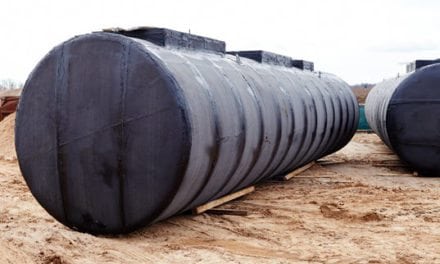Petroleum Fundamentals Balancing Out
- ULSD demand outlook improves
- Asian demand / U.S. exports show growth
- ULSD stocks approach normal
- Natural gas storage is within the five-year historical range
Alan Levine—Chairman, Powerhouse
(202) 333-5380

The Matrix
November has provided a markedly improved outlook for petroleum demand. ULSD spot futures prices began the month at $1.0257. They rallied to $1.2902 on Veteran’s Day and after a brief setback reached $1.3987. Prices closed a gap from last March.
The gain in price was attributed to a spate of good news on Covid-19 vaccines. This was more than enough to offset a report of building U.S. crude oil stocks from the Energy Information Administration.
Separately, there have been reports of strong demand for petroleum in Asia. Exports of petroleum from the United States to China are growing. The China Phase One Agreement-2020 has resulted in expansion of United States exports of crude oil, propane and LNG to China since July. This lags the Agreement’s objectives but represents a strong increase in U.S. exports.

Distillate Fuel Oil Stocks 2015 – 2020 Source: EIA, POWERHOUSE
The economy’s collapse in the spring led to a substantial inventory surplus of distillate fuels. These supplies have since been reduced, reflecting more intense management of refineries. Facilities have focused on production of gasoline and refineries have been operating at lower levels.
Distillate stocks are now 9% above the previous five-year seasonal average, down from a surplus of 29% at the start of June, according to The EIA’s Weekly Petroleum Status Report of November 25.

Refiner Net Input of Crude Oil 2015 – 2020 Source: EIA, POWERHOUSE
These are signs of normalization after many months of uncertainty about the pace and direction of economic change. Earlier estimates of oil demand in 2021, made without knowledge of the vaccines’ availability are likely to be revised higher and with that, price expectations as well. ULSD could now seek an objective of $1.57.
The relation between the U.S. and some traditional producers like Iran and Venezuela is being evaluated. These are only some of the changes the oil industry will have to navigate in the months ahead.
Supply/Demand Balances
Supply/demand data in the United States for the week ended November 20, 2020, were released by the Energy Information Administration.
Total commercial stocks of petroleum fell by 1.1 million barrels during the week ended November 20, 2020.
Commercial crude oil supplies in the United States decreased by 0.8 million barrels from the previous report week to 488.7 million barrels.
Crude oil inventory changes by PAD District:
PADD 1: Down 0.2 million barrels to 10.1 million barrels
PADD 2: Down 1.9 million barrels to 148.2 million barrels
PADD 3: Plus 2.0 million barrels to 262.8 million barrels
PADD 4: Down 0.2 million barrels to 24.3 million barrels
PADD 5: Down 0.5 million barrels to 45.2 million barrels
Cushing, Oklahoma inventories were down by 1.7 million barrels from the previous report week to 59.9 million barrels.
Domestic crude oil production was up 100,000 barrels per day to 11.0 million barrels daily.
Crude oil imports averaged 5.228 million barrels per day, a daily decrease of 26,000 barrels. Exports increased 83,000 barrels daily to 2.831 million barrels per day.
Refineries used 78.7% of capacity, up 1.3% from the previous report week.
Crude oil inputs to refineries increased 422,000 barrels daily; there were 14.263 million barrels per day of crude oil run to facilities. Gross inputs, which include blending stocks, rose 239,000 barrels daily to reach 14.653 million barrels daily.
Total petroleum product inventories fell 1.9 million barrels from the previous report week.
Gasoline stocks increased 2.2 million barrels daily from the previous report week; total stocks are 230.1 million barrels.
Demand for gasoline fell 128,000 barrels per day to 8.129 million barrels per day.
Total product demand decreased 408,000 barrels daily to 19.156 million barrels per day.
Distillate fuel oil stocks decreased 1.4 million barrels from the previous report week; distillate stocks are at 142.6 million barrels. EIA reported national distillate demand at 4.175 million barrels per day during the report week, a decrease of 49,000 barrels daily.
Propane stocks decreased 0.3 million barrels from the previous report week; propane stocks are 92.6 million barrels. The report estimated current demand at 1.171 million barrels per day, a decrease of 299,000 barrels daily from the previous report week.
Natural Gas
Natural gas prices struggle to sustain a rally. Production of natural gas has fallen below year-ago levels. This reflects slowing in the Permian Basin and the effect of multiple hurricanes in the Gulf of Mexico. LNG exports are growing and heating degree days are increasing. Nonetheless, prices are well below resistance at $3.00
According to the EIA:
Working gas in storage was 3,940 Bcf as of Friday, November 20, 2020, according to EIA estimates. This represents a net decrease of 18 Bcf from the previous week. Stocks were 322 Bcf higher than last year at this time and 250 Bcf above the five-year average of 3,690 Bcf. At 3,940 Bcf, total working gas is within the five-year historical range.
Was this helpful? We’d like your feedback.
Please respond to [email protected]
Powerhouse Futures & Trading Disclaimer
Copyright 2020 Powerhouse Brokerage, LLC, All rights reserved








